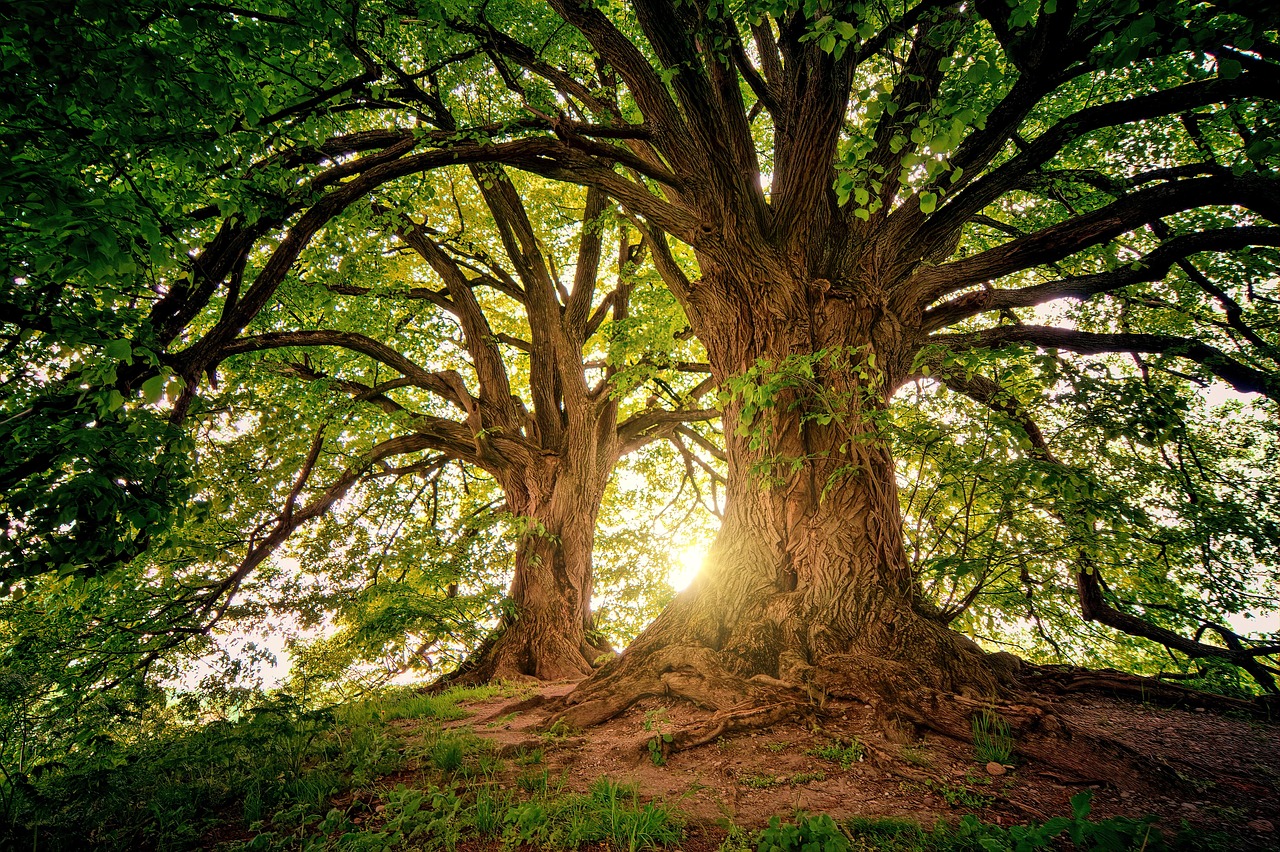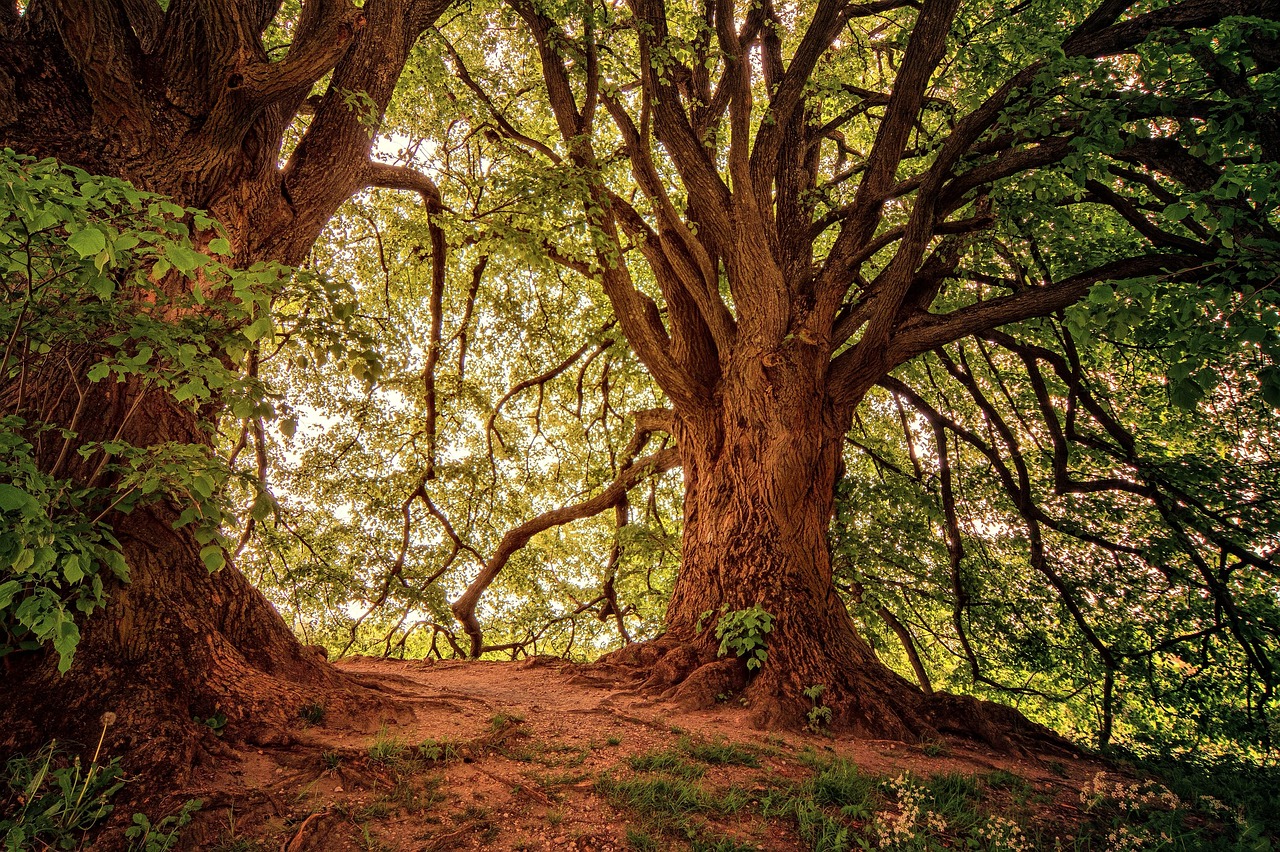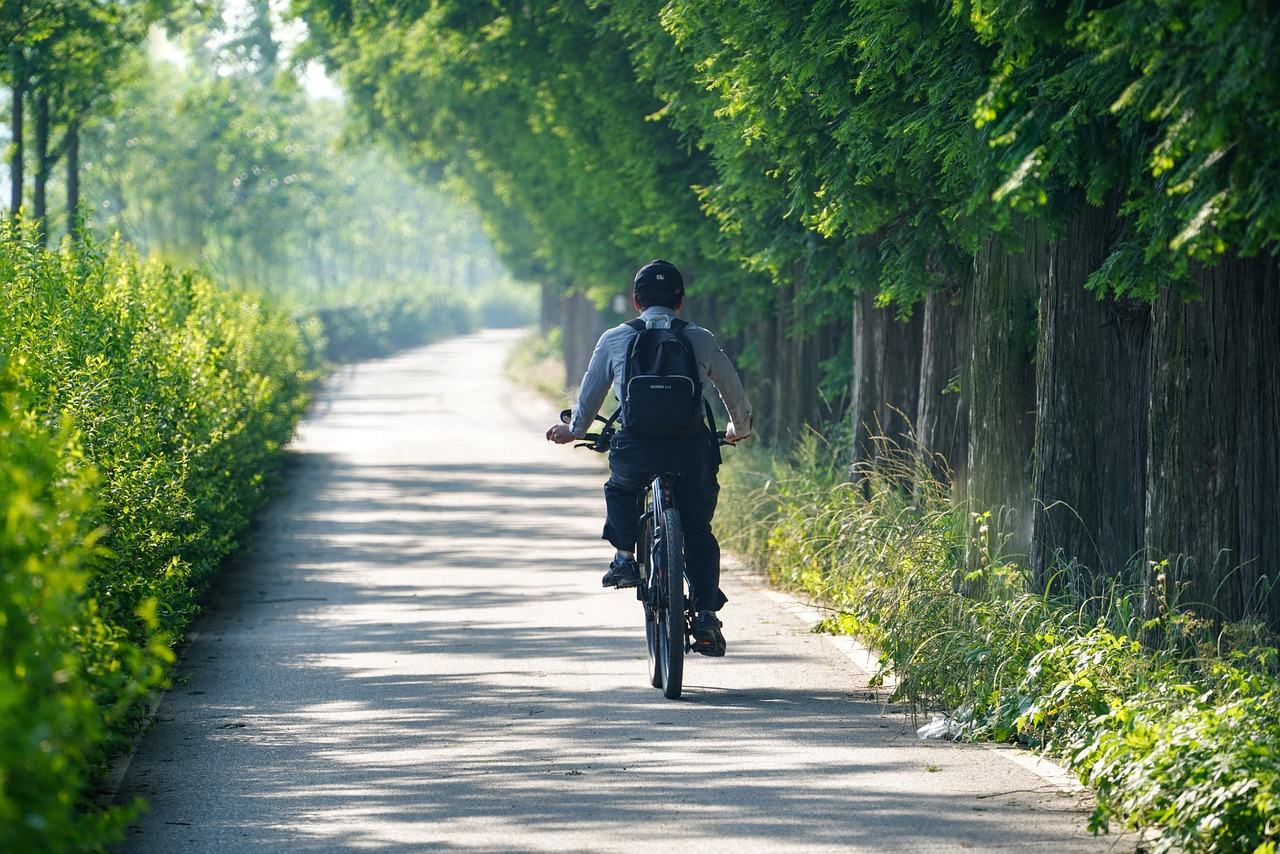Pruning shade trees effectively can significantly enhance their cooling efficiency by allowing more sunlight to reach the ground while maintaining adequate foliage for shade. This practice promotes healthy growth and optimum tree structure, ultimately leading to better temperature regulation in urban areas.
Shade trees play a crucial role in urban environments. They provide aesthetic value, enhance property value, and contribute to the ecological health of a neighborhood. One of the most significant benefits of shade trees is their ability to reduce temperatures in surrounding areas. This cooling effect can lead to lower energy costs for air conditioning and improve comfort levels for residents.

However, simply planting trees is not enough. Proper maintenance, particularly through pruning, is essential to maximize their cooling efficiency. Pruning helps manage tree structure, encourages healthy growth, and ensures that trees do not become overgrown, which can inhibit their ability to provide shade effectively. Understanding the right techniques and timing for pruning can make a significant difference in the benefits trees offer.
The Importance of Pruning Shade Trees
Pruning is an essential part of tree care that involves selectively removing specific parts of a tree, such as branches or roots. The reasons for pruning shade trees include:
- Improving Airflow: Pruning allows better air circulation through the tree’s canopy. Improved airflow reduces humidity around the tree and decreases the risk of fungal diseases.
- Enhancing Sunlight Penetration: By thinning out the canopy, more sunlight can reach the ground. This helps promote the growth of grass and other plants underneath, which can further aid in cooling.
- Increasing Structural Integrity: Regular pruning helps maintain a strong tree structure. Removing weak or diseased branches can prevent future damage during storms.
- Encouraging Healthy Growth: Controlled pruning stimulates new growth. This leads to a denser canopy that can provide better shade coverage.
It is also important to consider the type of tree when planning for pruning. Different species have varying growth habits and requirements. Understanding these differences can inform effective pruning strategies that enhance cooling efficiency.

| Tree Species | Growth Habit | Recommended Pruning Time |
|---|---|---|
| Oak | Broad canopy | Late winter to early spring |
| Maple | Dense foliage | Late spring after leaf out |
| Pine | Conical shape | Late winter |
| Birch | Columnar form | Late spring to early summer |
The timing of pruning is critical for maximizing cooling efficiency. Pruning during the wrong season can stress the tree and lead to reduced growth and health. For example, many deciduous trees should be pruned during their dormant period in late winter or early spring before new growth begins. This approach allows for healing and minimizes sap loss.
In addition to timing, the technique used during pruning is equally important. Proper cutting techniques can prevent damage to the tree and promote healthy regrowth. Here are some essential tips for effective pruning:
- Use Clean Tools: Always use sharp, clean pruning tools to make precise cuts. This reduces the risk of infection and promotes quicker healing.
- Aim for Natural Shape: Maintain the natural shape of the tree while removing unwanted branches. Avoid creating unnatural forms that may weaken the tree.
- Do Not Over-Prune: Removing too much foliage can stress the tree and reduce its overall health and effectiveness at providing shade.
- Monitor Tree Health: After pruning, keep an eye on the tree’s health. Look for signs of disease or stress, and be ready to adjust care as needed.
Pruning shade trees is not just about aesthetics; it is a crucial practice that contributes to energy efficiency and environmental sustainability. By understanding the importance of proper pruning techniques, homeowners and landscapers can ensure that shade trees continue to thrive while providing maximum cooling benefits.

The relationship between well-maintained shade trees and cooling efficiency is clear. As urban areas continue to expand, maintaining healthy trees will be essential in combating rising temperatures and enhancing livability in communities.
Understanding the Cooling Benefits of Shade Trees
Shade trees not only enhance the beauty of landscapes but also provide significant environmental benefits. One of the most important advantages is their ability to cool the surrounding area. This cooling effect occurs through various mechanisms, including shading, transpiration, and blocking wind. Understanding how these processes work can help homeowners and urban planners make informed decisions about tree planting and maintenance.
Mechanisms of Cooling
Shade trees contribute to cooling in several ways:

- Shading: Trees block direct sunlight from reaching surfaces like buildings, sidewalks, and roads. This can reduce surface temperatures significantly, leading to cooler air temperatures in the immediate area.
- Transpiration: Trees release moisture into the air through a process called transpiration. As water evaporates from leaves, it cools the surrounding air, similar to how sweat cools the human body.
- Wind Protection: Strategically placed trees can act as windbreaks, reducing wind speed and creating a more comfortable microclimate.
The combined effects of these mechanisms can lower temperatures significantly, making urban areas more comfortable during hot weather. Research has shown that shaded areas can be up to 20 degrees cooler than unshaded areas on hot summer days.
Choosing the Right Shade Trees
Selecting the right tree species is crucial for maximizing cooling efficiency. Different trees have different growth habits, canopy shapes, and water needs. Here are some factors to consider when choosing shade trees:
- Growth Rate: Fast-growing trees can provide shade sooner, while slower-growing species may take longer to establish.
- Canopy Size: Larger canopy trees offer more shade but may require more maintenance. Smaller trees may fit better in limited spaces.
- Drought Tolerance: Choosing drought-tolerant species can reduce water usage and ensure that trees thrive even in dry conditions.
- Pest Resistance: Selecting species that are less susceptible to pests can reduce the need for chemical treatments and promote healthier ecosystems.
Popular Shade Tree Species
The following table highlights some popular shade tree species along with their characteristics:
| Tree Species | Average Height | Canopy Spread | Growth Rate | Drought Tolerance |
|---|---|---|---|---|
| Red Maple | 40-60 ft | 30-50 ft | Fast | Moderate |
| Oak (White Oak) | 50-80 ft | 50-80 ft | Slow to Moderate | High |
| Linden (Basswood) | 50-80 ft | 30-50 ft | Moderate | Moderate |
| Sugar Maple | 60-75 ft | 40-50 ft | Moderate | Moderate |
| Sweetgum | 60-100 ft | 40-60 ft | Fast | Low to Moderate |
Selecting a mix of tree species can enhance biodiversity and resilience in local ecosystems. Additionally, it allows for a variety of aesthetic choices in landscaping, contributing to the overall beauty of the community.
The Role of Pruning in Maximizing Cooling Efficiency
Pruning is not only important for maintaining tree health but also plays a vital role in enhancing their cooling capabilities. Properly pruned trees can create a more effective canopy structure that maximizes shade coverage. Here are some key benefits of pruning related to cooling efficiency:
- Optimized Canopy Structure: Pruning helps create an open canopy, allowing for better light penetration and airflow. This results in more efficient transpiration and increased cooling.
- Improved Health: Regular pruning removes dead or diseased branches, ensuring that the tree remains strong and healthy. A healthy tree is better equipped to provide shade and transpire effectively.
- Increased Longevity: By preventing structural issues and disease spread through pruning, trees can live longer and continue to provide cooling benefits for many years.
The combination of selecting appropriate tree species and implementing proper pruning techniques creates a powerful strategy for enhancing the cooling efficiency of shade trees in urban environments. As cities grow and temperatures rise, these practices will become increasingly vital for maintaining livable spaces.
Tips for Effective Tree Planting and Maintenance
Caring for shade trees goes beyond just pruning. Proper planting and maintenance are also essential for ensuring their long-term health and effectiveness in providing shade. Here are some critical tips:
- Select Ideal Planting Locations: Choose locations that maximize sunlight exposure while considering future growth space for the tree’s canopy.
- Sufficient Soil Preparation: Ensure that soil is well-draining and nutrient-rich to promote healthy root development.
- Irrigation Planning: Implement a watering schedule that meets the needs of young trees. Deep watering is often better than frequent shallow watering.
- Pest and Disease Monitoring: Regularly check for signs of pests or diseases. Early detection allows for more effective management strategies.
A comprehensive approach to planting and maintenance will ensure that shade trees not only survive but thrive, providing essential cooling benefits for years to come.
Seasonal Considerations for Pruning Shade Trees
When it comes to pruning shade trees, the timing of the cuts is vital for promoting healthy growth and enhancing cooling efficiency. Different trees have unique growth patterns, and understanding their seasonal behaviors can greatly influence the effectiveness of pruning. Here are some key seasonal considerations to keep in mind:
Winter Pruning
Winter is often considered the best time for pruning many deciduous trees. During this dormant period, trees conserve energy and nutrients, making them less susceptible to stress from pruning. Key benefits of winter pruning include:
- Visibility: With leaves gone, it’s easier to see the tree’s structure and identify branches that need removal.
- Reduced Disease Risk: Many tree diseases are less active in winter, minimizing the risk of infection during pruning.
- Stimulated Growth: Pruning in winter encourages vigorous new growth in the spring, leading to a fuller canopy.
Spring Pruning
Spring is another crucial time for pruning, particularly for trees that bloom later in the season. Pruning during this time can help manage growth while promoting flower and leaf development. However, caution is necessary:
- Timing is Key: Wait until after flowering for spring-blooming species to avoid cutting off potential blooms.
- Encouraging Leaf Development: Pruning during this period can stimulate healthy foliage growth, thereby enhancing transpiration and cooling.
Summer Pruning
Summer pruning can be beneficial but should be approached with caution. This method often focuses on controlling size and shape rather than heavy cuts. Here are some considerations:
- Shaping Canopy: This is an excellent time to remove water sprouts and suckers that can clutter the tree’s structure.
- Sunlight Management: Thinning out branches can improve sunlight penetration and airflow within the canopy.
- Avoid Stressing Trees: Heavy pruning in summer can stress trees, especially during drought conditions.
Fall Pruning
Pruning in the fall is generally discouraged for most species. Trees are preparing for dormancy, and cuts made during this time can leave them vulnerable to disease and pests. However, light maintenance may be acceptable:
- Minor Adjustments: If necessary, remove dead or damaged branches to prevent further complications during winter.
- Avoid Heavy Cuts: Significant pruning should be avoided to maintain the tree’s health heading into winter.
Common Mistakes in Pruning Shade Trees
Even with good intentions, mistakes during pruning can hinder a tree’s health and its cooling efficiency. Here are some common errors to avoid:
- Improper Cut Techniques: Making flush cuts or leaving stubs can lead to decay and disease. Always use proper cutting techniques to ensure clean cuts.
- Over-Pruning: Removing too much foliage can stress the tree and reduce its ability to photosynthesize effectively, leading to diminished cooling benefits.
- Poor Timing: Pruning at the wrong time can disrupt a tree’s natural growth cycle. Always consider seasonal factors before making cuts.
- Lack of Planning: Failing to plan a pruning strategy can result in uneven canopies or structural weaknesses. Assess the tree’s needs before starting work.
The Impact of Climate on Pruning Practices
The local climate significantly influences how and when trees should be pruned. Understanding these factors can help achieve optimal results. Here are some climate considerations:
Drought Conditions
In areas experiencing drought, careful planning is necessary when pruning shade trees. Trees under stress from lack of water may not respond well to heavy pruning. Recommendations include:
- Limit Pruning: Reduce the amount of foliage removed during drought periods to minimize stress.
- Focus on Health: Prioritize removing dead or diseased branches instead of shaping or thinning.
Extreme Weather Events
Regions prone to extreme weather events like hurricanes or heavy snow may require additional considerations:
- Structural Pruning: Strengthening trees through strategic pruning before storms can reduce wind resistance and potential damage.
- Avoiding Heavy Loads: In areas with heavy snowfall, keeping branches clear of overcrowding can help prevent breakage.
Tools for Effective Pruning
Having the right tools is essential for effective pruning. Using the appropriate equipment ensures clean cuts and minimizes injury to both the tree and the pruner. Here are some essential tools for pruning shade trees:
- Hand Pruners: Ideal for small branches up to ¾ inch thick. They are perfect for making precise cuts.
- Loppers: Suitable for larger branches up to 2 inches thick, providing greater leverage for cutting.
- Saws: Use a pruning saw for branches thicker than 2 inches. Ensure it is sharp for clean cuts.
- Tree Climbing Gear: For high branches, harnesses and ropes ensure safety while working at height.
Caring for shade trees through proper pruning techniques will ensure they provide maximum cooling benefits while maintaining their health and beauty within the landscape.
Advanced Pruning Techniques
In addition to the basic pruning techniques discussed, there are advanced methods that can further enhance the health and efficiency of shade trees. These techniques often require a deeper understanding of tree biology and growth patterns but can yield significant benefits in terms of cooling efficiency and overall tree vitality.
Crown Thinning
Crown thinning involves selectively removing branches throughout the tree’s crown to improve light penetration and air circulation. This technique can help:
- Reduce Wind Resistance: By removing excess branches, the tree is better equipped to withstand strong winds, thereby decreasing the likelihood of damage.
- Enhance Sunlight Access: Increased light penetration allows for better growth of lower foliage and ground plants, contributing to additional cooling effects.
- Encourage Healthy Growth: Thinning encourages the tree to direct its energy towards remaining branches, fostering healthier growth patterns.
Crown Raising
Crown raising is another technique that involves removing lower branches to raise the overall canopy height. This practice can be particularly beneficial in urban settings where it is essential to maintain clear pathways and visibility:
- Improved Clearance: Raising the crown can provide more space for pedestrians and vehicles, enhancing safety and accessibility.
- Increased Light Availability: With lower branches removed, more sunlight can reach underneath the tree, promoting grass growth and aiding in cooling.
Crown Reduction
Crown reduction reduces the size of the tree’s crown while maintaining its natural shape. This technique is often used for trees that have outgrown their space or pose a risk to structures:
- Controlled Growth: Reducing the crown can help manage the size of the tree, making it more suitable for urban environments.
- Minimized Risk: By reducing height and spread, the risk of falling branches is decreased, which is crucial during storms.
Environmental Benefits of Shade Trees Beyond Cooling
While the primary focus of pruning shade trees is to maximize cooling efficiency, these trees offer a host of additional environmental benefits that are worth noting:
- Air Quality Improvement: Trees absorb carbon dioxide and release oxygen, contributing to cleaner air. They also filter pollutants from the atmosphere.
- Biodiversity Support: Shade trees provide habitats for various wildlife species, including birds, insects, and mammals, fostering biodiversity in urban areas.
- Soil Erosion Prevention: The root systems of trees help stabilize soil, preventing erosion and promoting healthier landscapes.
- Stormwater Management: Trees absorb rainwater through their canopies and roots, reducing runoff and helping manage stormwater in urban environments.
Community Engagement and Education
Engaging the community in tree care and pruning practices can enhance the benefits that shade trees provide. Educational programs can teach residents about proper pruning techniques, the importance of maintaining urban trees, and how to select appropriate species for planting. Community involvement can lead to:
- Increased Awareness: Educating community members about the benefits of shade trees promotes understanding and appreciation for these vital assets.
- Volunteer Opportunities: Organizing tree care events encourages community participation and fosters a sense of ownership over local green spaces.
- Collaboration with Experts: Partnering with arborists and local organizations can enhance knowledge sharing and provide valuable resources for effective tree maintenance.
Conclusion
Pruning shade trees effectively is essential for maximizing their cooling efficiency and ensuring their long-term health. By understanding the principles of proper pruning techniques, seasonal considerations, and selecting suitable tree species, homeowners and landscapers can significantly enhance the environmental benefits that shade trees provide. Additionally, engaging communities in tree care fosters a sense of responsibility towards local ecosystems.
The positive impacts of well-maintained shade trees extend beyond cooling; they contribute to improved air quality, support biodiversity, and aid in soil erosion prevention. As urban areas continue to grow and face challenges related to climate change, incorporating shade trees into community planning will be crucial for creating sustainable living environments. Through education, effective pruning practices, and community involvement, we can ensure that shade trees thrive, ultimately enhancing our quality of life.
